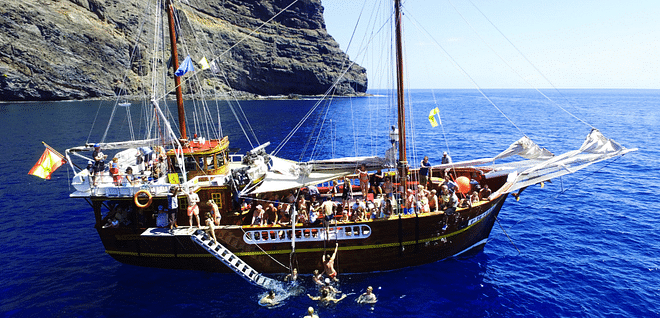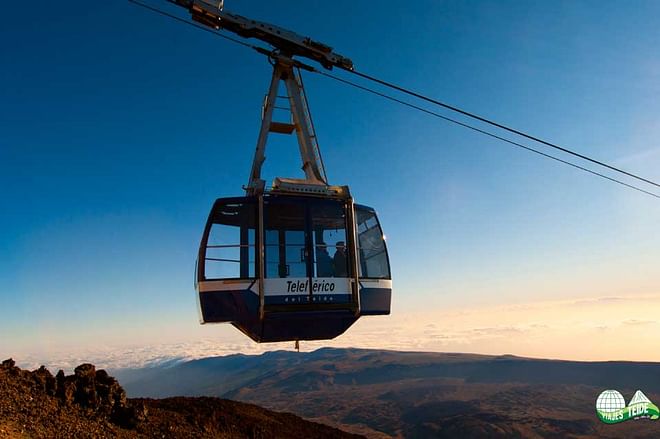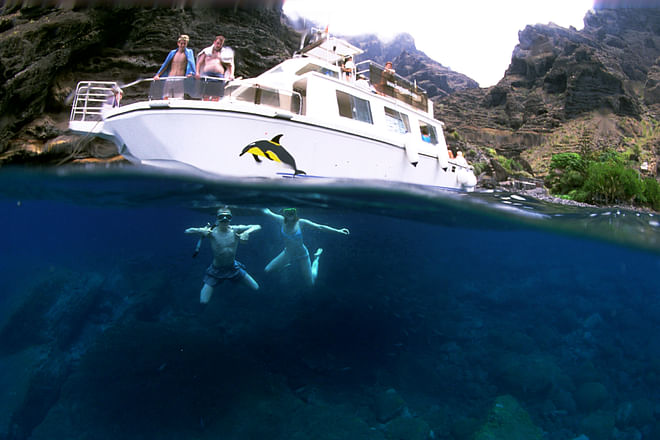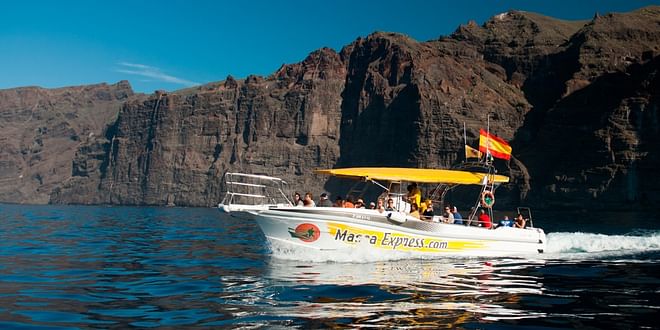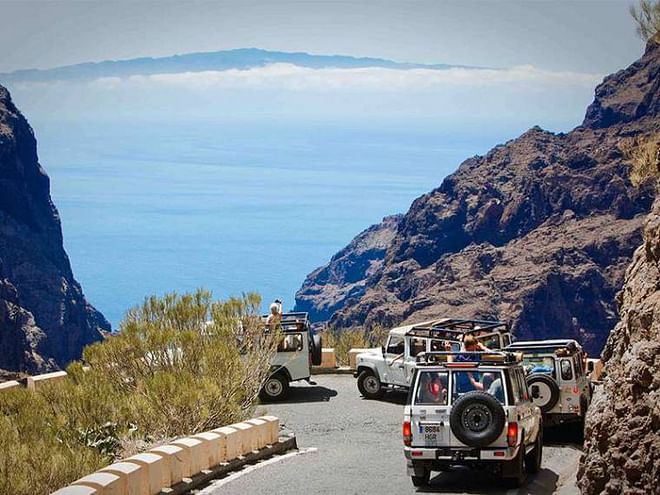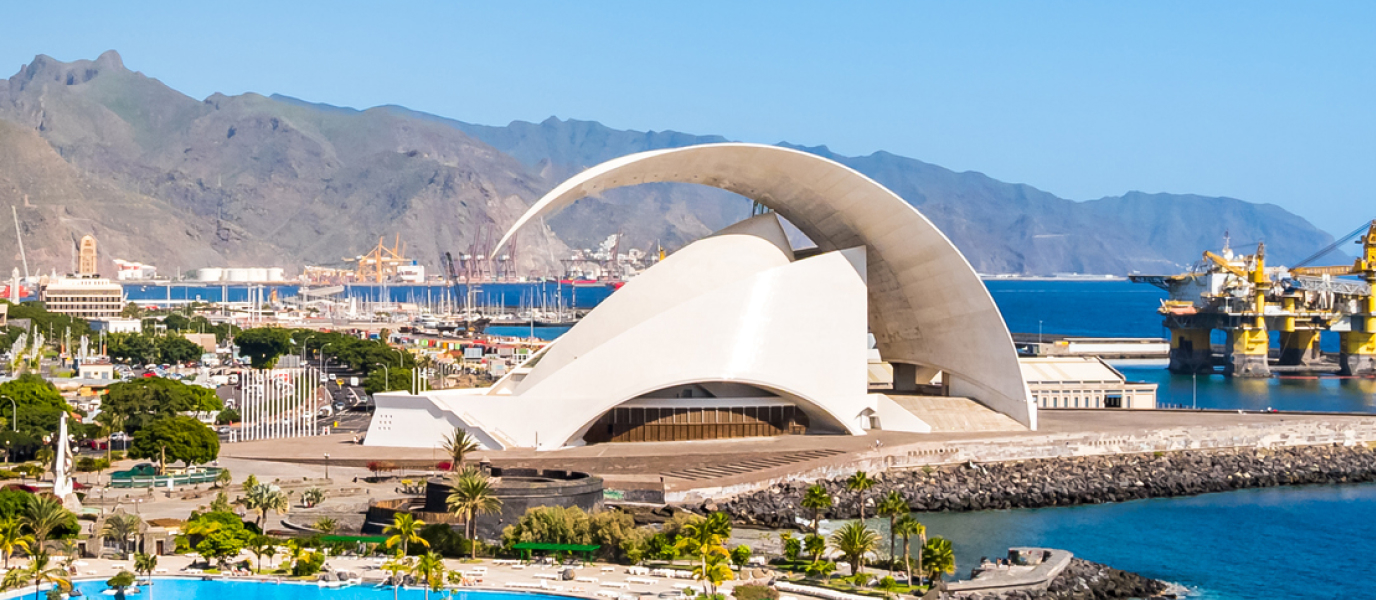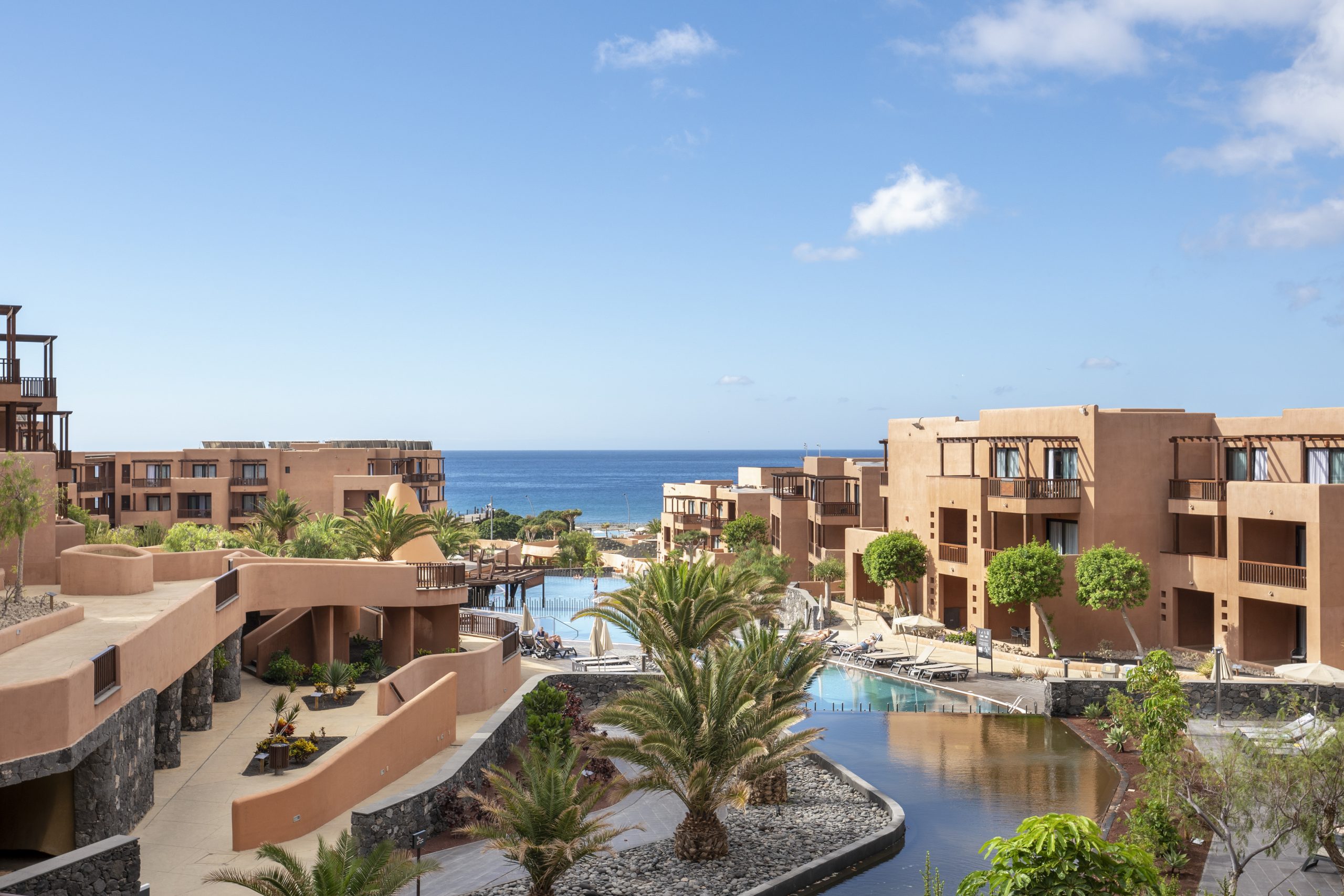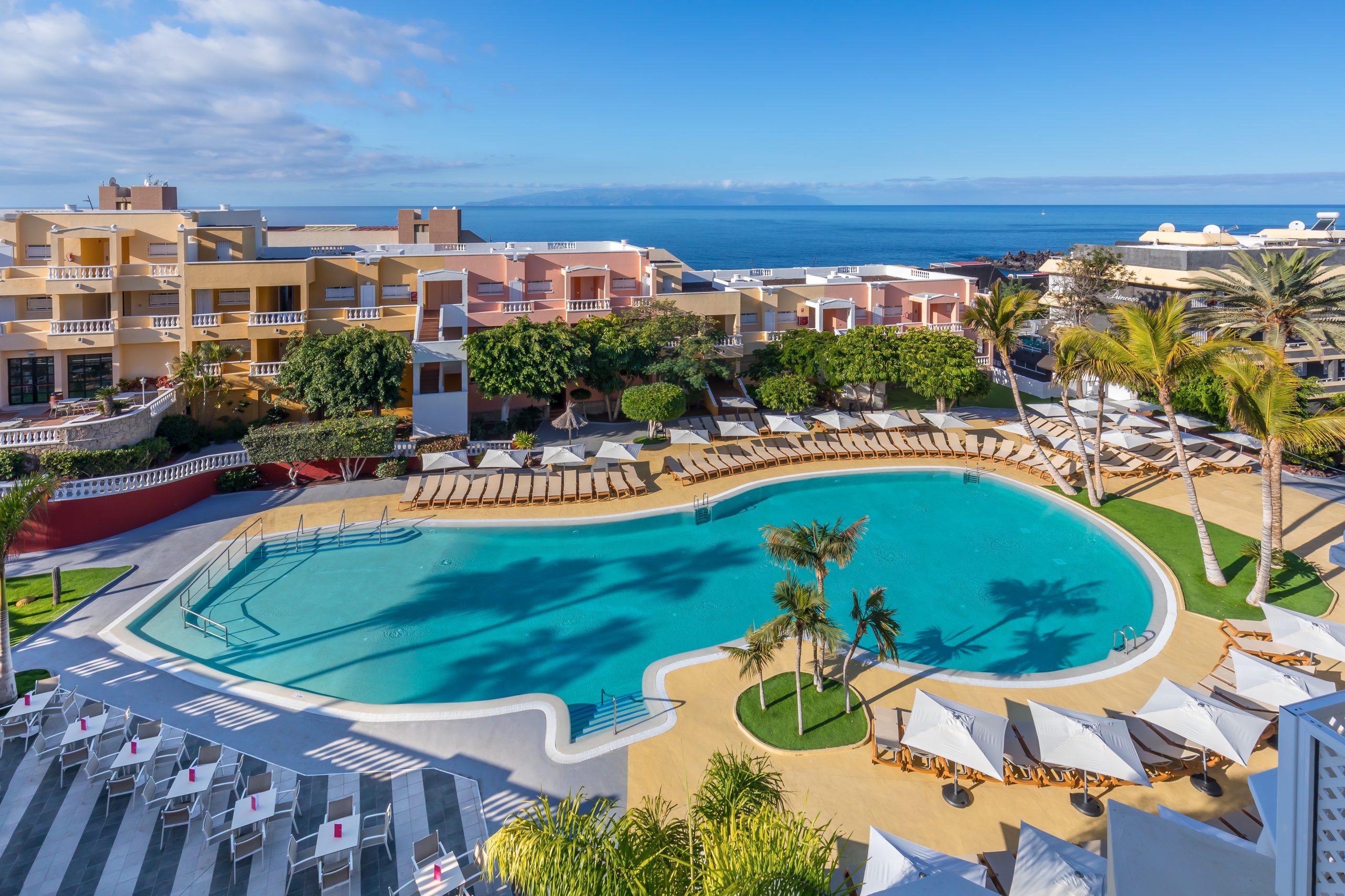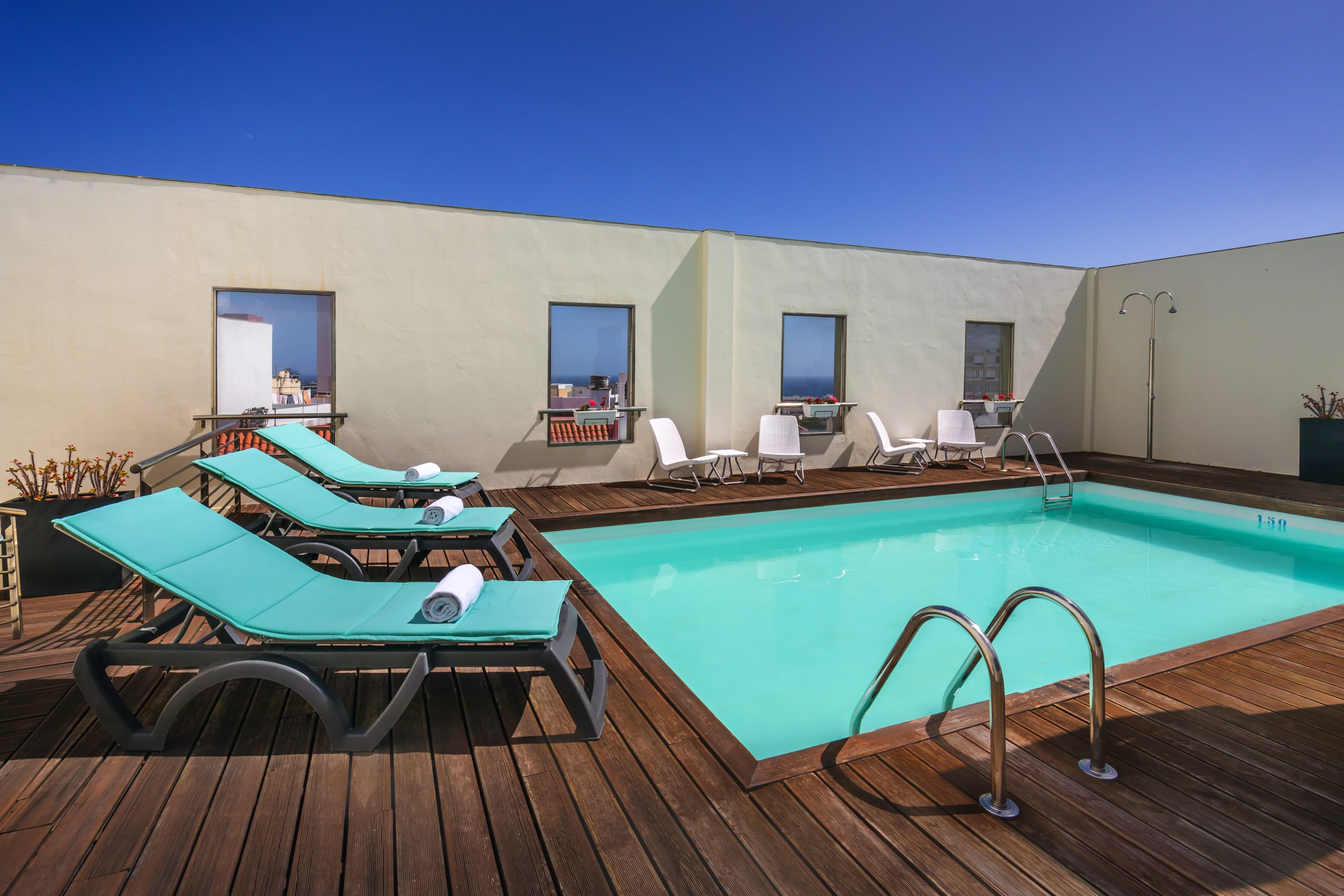The Teide cable car climbs upwards at a good pace while the different features of the landscape dwindle away below and the panoramic view spreads ever outwards. The best moment to ascend Mount Teide is early in the morning when most tourists are still resting in their hotels. However, if you take one of the first cabins, you might be surprised to see travellers already on their way down the mountain, or waiting to descend. That’s not because they got up even earlier than you, they probably decided to enjoy the experience of spending the night sleeping at the summit of a volcano—their cold, sleepy faces are always a dead giveaway.
Teide cable car: an ascent to 3,555 metres
Yes, you read that right, to an altitude of 3,555 metres. During the journey you’ll ascend over a thousand metres in just eight minutes. When you reach the base station, you can have a coffee in the bar or a bite to eat in the buffet restaurant before heading up to the La Rambleta upper station. Once you’re at the summit there are various signposted trails to follow if you’d like to go for a walk or hike. The trails to La Fortaleza and Pico Viejo viewpoints have free access. One boasts panoramic views of the north of the island while the other looks out towards the south. There is also another trail known as the Telesforo Bravo which leads to the crater, but you need a special permit that must be booked in advance from Teide National Park; it’s not hard to get but make sure you apply for it in time.
It’s also important to note that the cable car ascent isn’t suitable for everyone. In fact, pregnant women, children under two and people with heart problems shouldn’t ascend by cable car.
Where did the idea for a cable car come from?
Many types of transport that today seem straightforward and commonplace once represented a big challenge to mankind. The aim of the Teide cable car was to make it easier for people of all fitness levels to ascend the volcano. The first person to contemplate constructing a cable car was Andrés de Arroyo y González de Chávez who, in one of his journeys around Europe in 1929, discovered—in Germany and Switzerland—the existence of these “contraptions” that let people enjoy magnificent panoramic views with minimal effort. On his return, he resolved to give Mount Teide something similar.
By 1930, just a year later, the project has been drawn up by José Ochoa Benjumea, an engineer specialising in canals and ports. This would be used as the basis for the definitive project signed off in 1960 by two other engineers, Miguel Pintor Domingo and Francisco Trujillo Armas. Building work and excavation started two years later to create the two stations, but the project took eight years to be completed. The uneven terrain, challenge of bringing the materials up the mountain (sometimes donkeys were used) and winter snowfall meant that the job was no easy task.
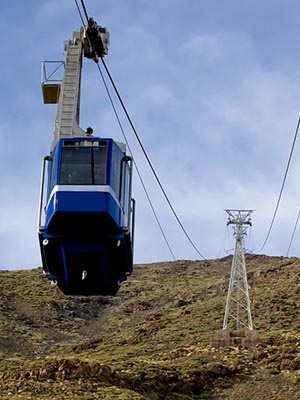
After overcoming all these difficulties, the cable car was finally inaugurated on 18 July 1971 and opened to the public the following August. It’s easy to imagine the excitement shared by local residents and visitors at being able to travel up to the summit of Mount Teide in just a few minutes. As times changed, and safety measures with them, the cable car underwent a series of improvements between 1999 and 2007 and the old cabins were replaced by modern ones befitting the new century.
The two cable car stations
The Teide cable car takes you directly from the base station to almost the summit of the volcano without stopping. The base station, which can easily be reached by road, is at an altitude of 2,356 metres. Once there, you can park for free and then ride upwards in one of the two cable car cabins. Each can hold a maximum of 44 passengers. If the skies are clear you’ll enjoy amazing views on the way up as you admire the landscape of Mount Teide National Park. Just eight minutes later you’ll reach the upper station at 3,555 metres. There are no cafeterias or bar areas here like there are at the base station but you will find toilets, telephones and Wi-Fi.
On arrival, take your time and have a look around to appreciate all the different views from this altitude—observe how the sun infuses the landscape with different tones—and then venture along one of the trails mentioned above which we will describe in a little more detail below.
- Route to the Teide crater (Telesforo Bravo). This trail leads to the highest summit in Spain and gives you the chance to spot other Canary Islands: Gran Canaria, La Palma, El Hierro and La Gomera. Book your permit at National Parks.
- Route to the La Fortaleza viewpoint. It boasts panoramic views of northern Tenerife, La Orotava valley and the slope of Mount La Esperanza.
- Route to the Pico Viejo viewpoint. A favourite route of people who ascend Mount Teide by cable car because it offers wonderful views of the Cañadas del Teide caldera and allows you to admire the multicolour Pico Viejo crater, the Roques de García and Mount Guajara.
Complete your visit to Mount Teide
Don’t just settle for riding the cable car and taking in the views—it’s also worth visiting magnificent Mount Teide National Park, the largest protected area in the Canary Islands. If its landscapes are astonishing during the daytime—like something from another planet—when night falls a never-ending carpet of stars unfurls across the skies. Make the most of the lack of light pollution to do some stargazing. This is where you’ll find the Teide Observatory, one of the five most important observation points on the planet.
This vast volcanic space is so beautiful that it can be enjoyed in any season of the year. In spring, the park is visited by thousands of botany enthusiasts who come to admire the blooming red bugloss flowers; winter sees Mount Teide wrapped in a stunning blanket of snow, while summer and autumn reveal gorgeous ochre, yellow and red hues.
Mount Teide has been a sacred place since antiquity, a volcano that inspired respect in its first inhabitants and bewitches all who gaze upon it.

























































